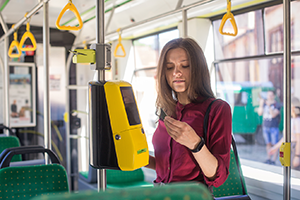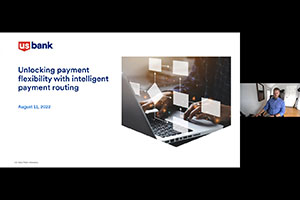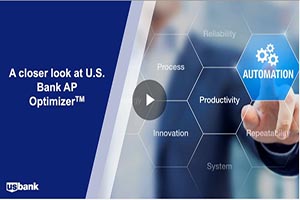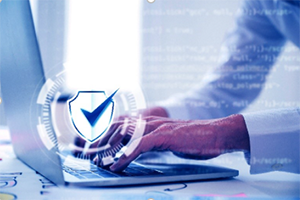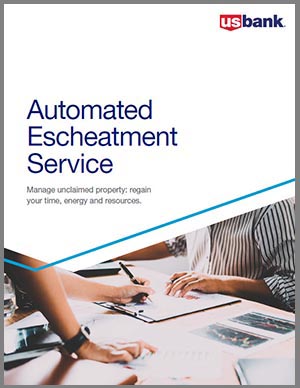Escheatment is time consuming
Few accounting processes are more manual and time-consuming than escheatment. Just ask Becky Stephens, Assistant Vice President in Business Project Analytics at U.S. Bank, who has worked in escheatment for 20 years.
“The first reporting that I was engaged in required us to obtain a list of outstanding checks from our Account Reconciliation Package (ARP) group and manually keying that information into the reporting software,” she says. “There was no integration with other systems, and nothing was automated.”
Whether working with outstanding checks or deposit accounts, the only technology involved was the reporting software. All of the information was hand keyed.
“We had to manually close out everything,” she says. “If we wanted to close out the deposit account, we had to go into our online transaction system and debit the funds from every account one at a time using an online transaction application or general ledger ticket. Now, all of those things are automated.”
Other pieces of the escheatment process that are ripe for additional automation include:
- Tracking dormancy to identify escheatable items for multiple jurisdictions
- Sending required communication to unclaimed property owners
- Aging unclaimed property from one status to the next based on applicable laws
- Sending notifications and reports to relevant government entities
- Updating the unclaimed property system
While some pieces of the puzzle still require manual labor and personal attention, it’s a far cry from the way things were when Stephens started.
“The automated escheat solution that has been developed internally here at the bank for our clients brings much needed automation to escheatment processing. Tracking and monitoring payments has always proven to be time consuming and tedious. This is an area that still requires much manual intervention to be compliant with escheat reporting. I’m very impressed with the automated solution being presented by this team,” says Stephens.
Escheatment can be improved with automation
With so many steps and processes involved in escheatment, the next phase of modernization is creating a wholistic application, rather than using stand-alone systems to accomplish those goals. Linking escheatment to a digital treasury management platform can create a fully integrated workflow with automated processes and the benefits of end-to-end visibility.
“As a bank, we are uniquely positioned to offer a better, more automated experience to our clients for escheatment services. We can meet them where they are along their digital journey as they migrate to more electronic forms of payment,” says Vanessa Angeles, senior vice president and head of new product development, Global Treasury Management at U.S. Bank. Her team is responsible for bringing new and innovative products in the market. “Until the day comes where all payments are electronic, we are here to help our clients every step of the way.”
Imagine a system where uncashed checks were automatically identified and processed as they aged, following the rules of the individual applicable jurisdiction, right up until the time the money was either delivered to its rightful owner or turned over to the respective government entity.
Larry Andretich, Vice President of Treasury Management at U.S. Bank and a member of Angeles’s team, is working on the automated escheatment solution that delivers those end-to-end results. He sees advantages for any company that deals with unclaimed property, but highlights obvious benefits for public utilities, commercial real estate entities and health care companies that often deal with stale deposits or small overpayments on accounts. According to Andretich, “the new solution is integrated, automated and exception-based.”
“Integrating the application with our Check Disbursement Services and the behind the scenes operations creates the opportunities for automation and exceptions-based handling of only critical items requiring review. This full end-to-end system truly provides a virtually hands-off approach to managing unclaimed property,” says Andretich.
The entire process is automated, with full end-to-end visibility in the user interface. The new service does all the heavy lifting in terms of liability analysis, due diligence mailing, managing the responses and filing the state reports.
“Taking an integrated approach to the escheatment solution will allow clients to take advantage of all our Check Disbursement services including account reconciliation, check fraud prevention and access to check images for research,” says Angeles. “Clients can also choose to outsource their check printing and mailing process to the bank, completely automating their check disbursements from print to escheatment.”
Next level savings for escheatment in the future
Beyond the increased efficiency and cost savings, the most exciting opportunity of end-to-end automation is the ability to shorten, or even eliminate the escheatment cycle for some payments.
“We're also going to create some unique tools within the due diligence letter,” Andretich says. “We’ll have a QR code so when the person who didn’t cash the $2.50 check because it was too much effort to get it to their bank, or lost or misplaced the item gets their letter, they’ll be able to scan the QR code with their phone. It will take them to a web page that will ask them to validate their identity and give them the option to get paid via Zelle® or ACH.”
In other words, automating escheatment makes it smoother and easier for all parties attached to the unclaimed property.
Contact us to learn more about how automation could make escheatment more efficient and effective.






